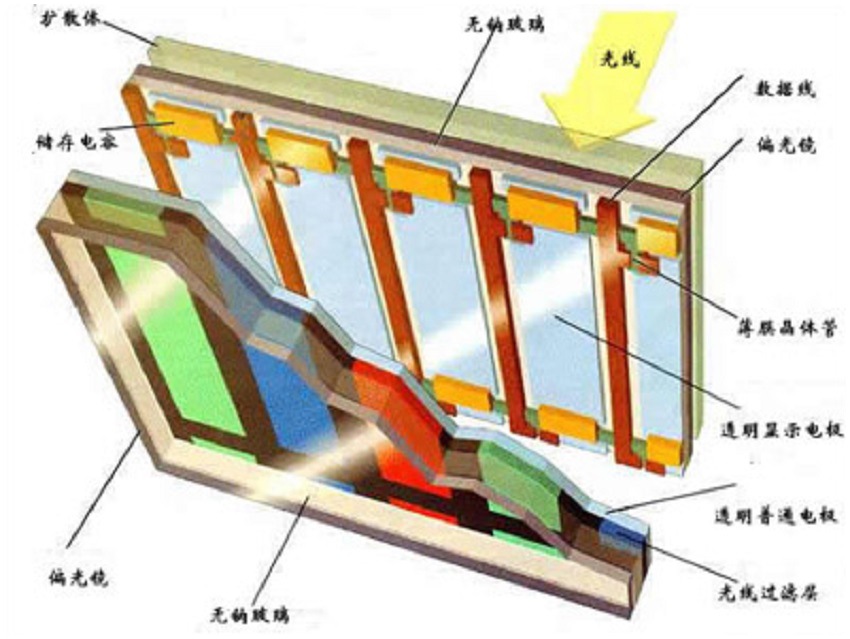LCD WORKING PRINCIPLE
In simple terms, the basic principle of the display can work is to fill liquid crystal material between two pieces of parallel glass and change the arrangement of molecules inside the liquid crystal material through voltage to achieve the purpose of shading and transmittance to display the depth of different and well-spaced images. As long as put three color filter layer between two pieces of glass, it can display color images.

LCD is short for liquid crystal display. The structure of LCD is to place liquid crystal in two pieces of parallel glass. There are many small vertical and horizontal wires between the two pieces of glass. It’s much better than CRT, but more expensive.
Liquid crystals are organic compounds made of long, rod-like molecules. In their natural state, the long axes of these rod-shaped molecules are roughly parallel. The first feature of LCD is that the liquid crystal must be poured into two planes with a slot in order to work properly. The slots in the two planes are perpendicular (intersect at 90 degrees), that is, if the molecules in one plane are aligned north-south, the molecules in the other plane are aligned east-west, and the molecules between the two planes are forced into a state of 90-degree twist. Because light travels in the direction the molecules are aligned, it is also twisted 90 degrees as it passes through the liquid crystal. But when a voltage is applied to the liquid crystal, the molecules rearrange themselves vertically, allowing light to shine through without any twisting. The second feature of LCD is that they rely on polarized filters, which are actually a series of thinner and thinner parallel lines, and on the light itself, where natural light diverges randomly in all directions. These lines form a net that blocks all light that is not parallel to them, and the lines of the polarized filter are exactly perpendicular to the first, so they completely block the light that is already polarized. Only if the lines of the two filters are completely parallel, or if the light itself has been twisted to match the second polarized filter, the light can pass through. The LCD consists of two polarized filters that are perpendicular to each other, so under normal circumstances it should block any light that is trying to pass through. But because the two filters are filled with warped liquid crystals, after the light passes through the first filter, it is twisted 90 degrees by the molecules and finally passes through the second filter. If, on the other hand, a voltage is applied to the liquid crystal, the molecules rearrange themselves so that they are completely parallel, so that the light does not twist and blocked by the second filter. In short, the extra charge blocks the light, while the uncharged one shoots it out. Of course, you can also change the arrangement of the liquid crystals in the LCD, so that the light is emitted when it is charged, but blocked when it is not.